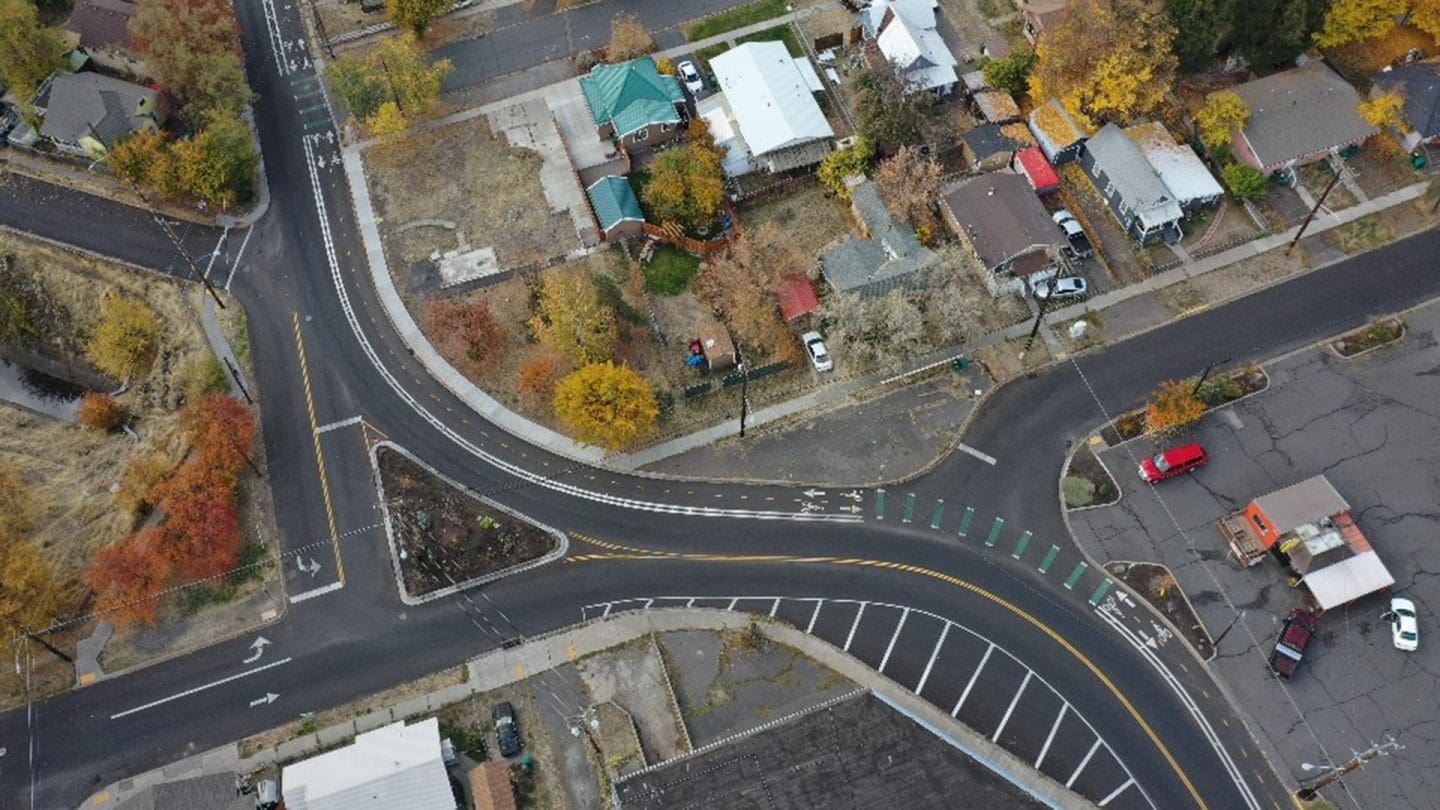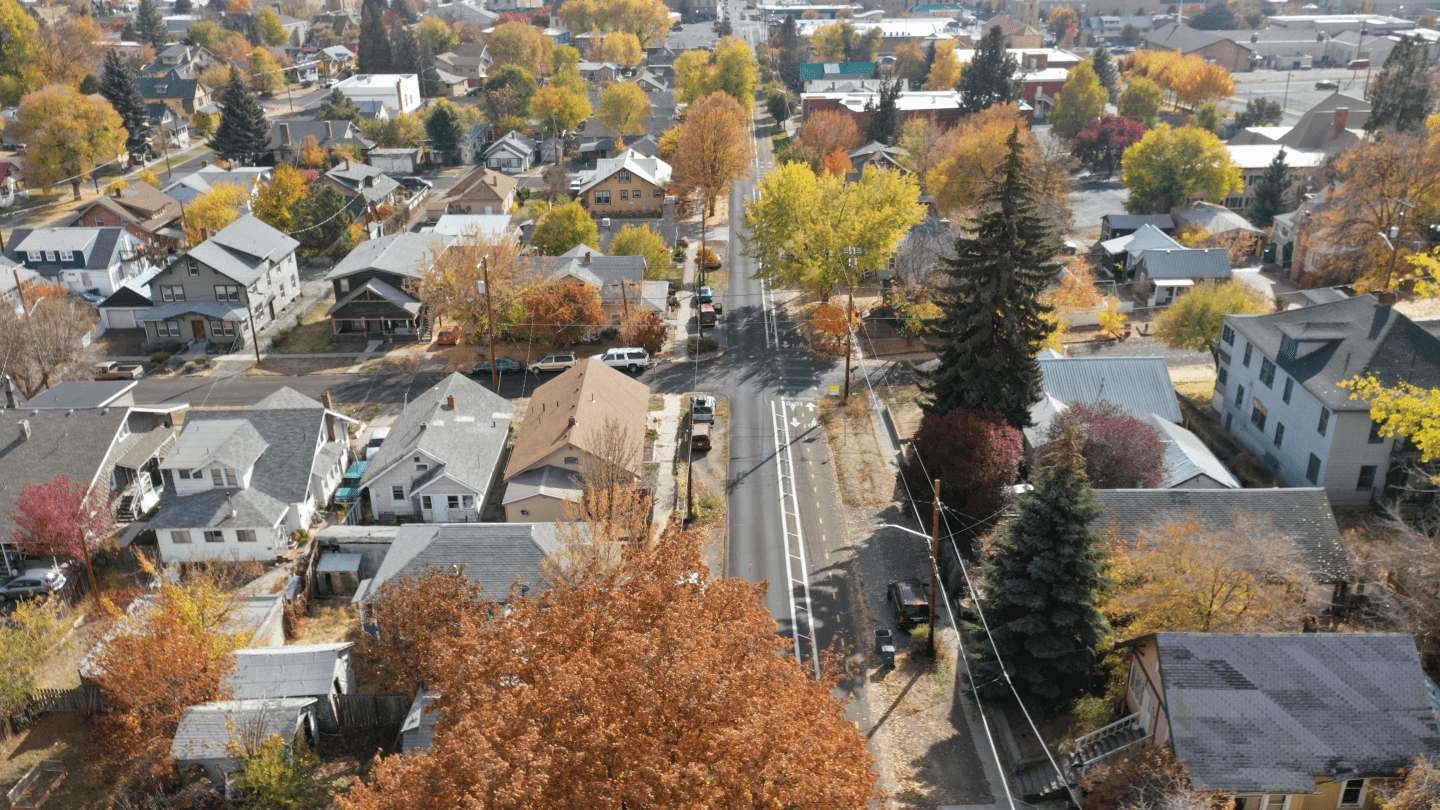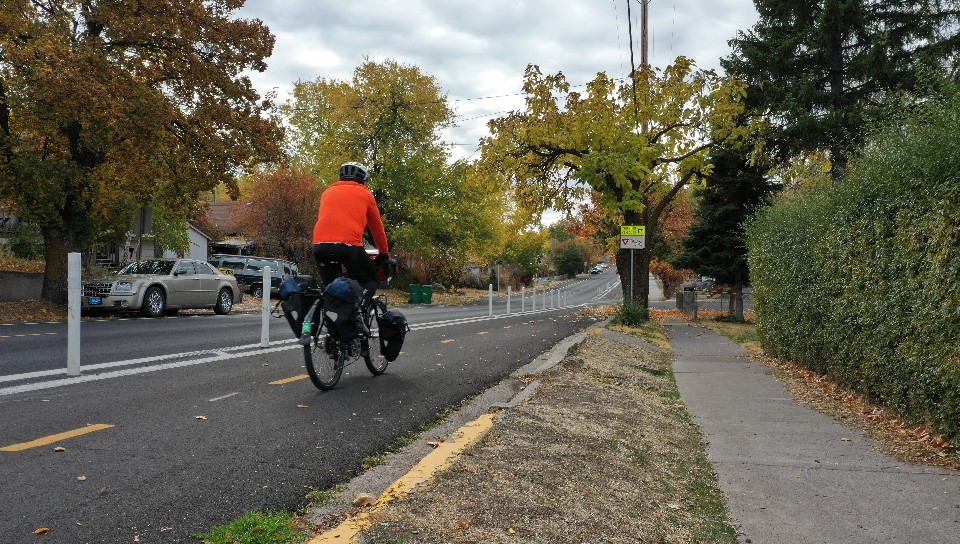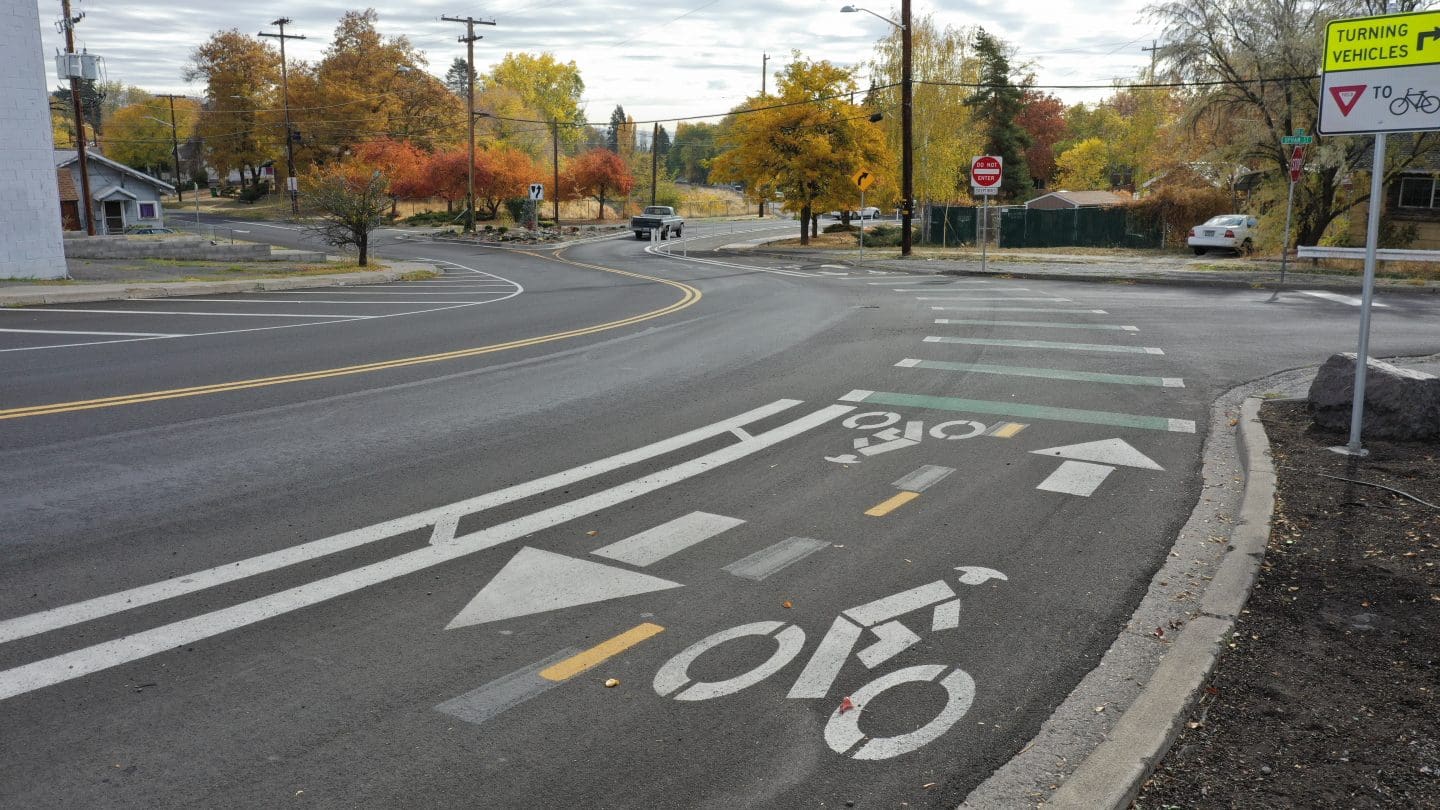December 6, 2018
The Protected Bike Lane That's Revitalizing a Community
What do Sardinia, Okinawa, the Nicoya Peninsula, Ikaria, and Loma Linda have in common?
They’re all Blue Zones. The world’s “longevity hotspots.” Communities where people live longer and healthier lives than anywhere else.
Cities like these are the inspiration for the Blue Zones Project – an initiative to uncover the keys to health and longevity, and apply them to communities around the world looking to improve health outcomes. One such community is a small city in southern Oregon.
Welcome to Klamath Falls
Klamath Falls is a town with a population of about 40,000 that sits just above the California border. In 2016, Klamath County was ranked 35th out of 36 Oregon counties in overall health outcomes.
The need for healthy solutions was clear, but the county’s clinical care rankings didn’t reflect the same low ranking. In fact, Klamath County ranked 19th out of Oregon’s 36 counties for clinical care. (Source: County Health Rankings & Roadmap)
What, then, was causing the low rankings in overall health? In 2012, a collaboration of organizations, citizens, agencies, healthcare providers, and businesses came together to form Healthy Klamath and answer this question.
Funded by public health organizations – and in collaboration with the Blue Zones Project, the Oregon Institute of Technology, and the City of Klamath Falls – Healthy Klamath took to a concept study funded by a public health grant to help them identify proactive interventions to health issues.
Decoding the Disconnect
Oregon Institute of Technology and Healthy Klamath mapped the incidence of preventable diseases in Klamath County, overlaying these indicators with a walkability score. They examined instances of heart disease, diabetes and other health issues and identified corresponding locations to see if there was any correlation.
Their conclusion was that in Klamath Falls, the key to improving health outcomes lies outside the doctor’s office. Through examining these maps, Healthy Klamath partners realized that health outcomes could be most impacted by improving the community’s built environment: the places where residents live, work, and recreate. This shifted the focus to disease prevention, rather than waiting until people got sick.
Increasing biking and walking from 4 to 24 minutes a day on average can reduce cardiovascular disease and diabetes by 14%.
- Health Co-benefits and Transportation-Related Reduction in Greenhouse Gas Emissions in the San Francisco Bay Area. Maizlish, N. et al (2012).
Tapping into a common element of Blue Zones, Healthy Klamath came up with the idea of a bicycle lane that would run through some of the least healthy neighborhoods and connect downtown Klamath Falls to Moore Park. Given that average speeds showed well above speed limits on all segments of the study corridor, they knew the bike lane would need protection. Protected bike lanes have the potential to improve the health, connectivity, and economy of a community through:
- Increasing physical activity
- Providing connections to green space
- Reducing crashes
- Increasing retail sales because of foot and bike traffic
- Slowing vehicle speeds
Protected bike lanes make 96% of riders feel safer.
- Lessons from the Green Lane: Evaluating Protected Bike Lanes in the U.S. National Institute for Transportation and Communities (2014).
Popping Up in Downtown Klamath Falls
In June 2015, Sky Lake Wellness Center and Healthy Klamath partnered with the City of Klamath Falls to do a pilot demonstration of a protected bike lane during Klamath Falls’ Third Thursday Downtown event. The “pop-up” bike lane, made of planter boxes, demonstrated the idea of a protected lane and helped build awareness and public support for the idea.
Kittelson Comes In
After being contacted by a doctor and a nurse from Sky Lake Wellness Center, Kittelson took the protected bike lane project from concept study all the way through final design.
During plan development, our project team held three public open houses and one virtual open house to engage the surrounding community in creating and selecting the preferred concept design. We created five concepts and worked with the City to analyze each one, including impacts on traffic lanes and operations, on-street parking, maintenance considerations, access to businesses, visibility, vertical grades, and general implementation costs. (Our team’s concept study won the Judge’s Choice Award from the the ACEC Oregon chapter.)
Once funding was secured for the project, Kittelson’s planning and design teams collaborated with the Sky Lake Wellness Center and City staff to bring the project to life and work around the challenges that arose – including some creative intersection crossings, removable posts for snow plowing, and the redesign of a large channelizing island!
The completed bike lane is a continuous route with minimal road crossings and minimal conflicts between people walking, biking and driving.
An Energized Community
Klamath Fall’s new bike lane officially opened in summer 2018. The hard work behind Healthy Klamath’s community-driven effort has resulted in a low-stress, all-ages-and-abilities route between downtown Klamath Falls and Moore Park – a route that’s expanding opportunities for daily active transportation and community connection.
The protected bike lane is a significant step toward a more active Klamath Falls. Our senior engineer (and licensed drone operator) Matt Kittelson recently took a drive to southern Oregon and took these photos of the bike lane:
Healthy Klamath continues to promote health and well-being for Klamath County residents through local health data, resources, best practices, news articles and community events. In 2018, Klamath County was selected as a RJWF Culture of Health Prize Winner.
It’s been a privilege for us at Kittelson to see Klamath Falls rallying around their community’s health and well-being, and applying the secrets of Blue Zones to propel Klamath Falls into a vibrant and healthy future.




